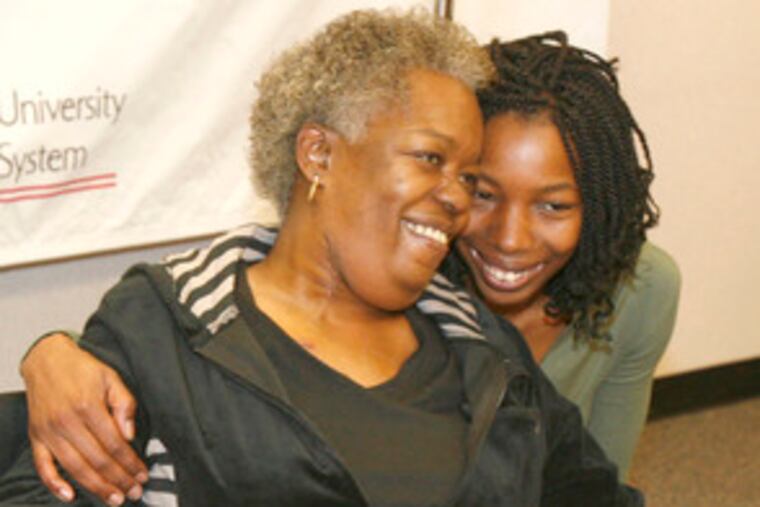Hope for high blood pressure
Temple surgeons try a breakthrough device.

Hazelene Jackson started her unsuccessful battle against hypertension at age 12. Since then, her condition has caused serious heath problems, including a severe stroke.
Now the 53-year-old from Northeast Philadelphia is hoping that a small, pacemaker-like device implanted in her chest will accomplish what seven daily medications have not: lower her dangerously high blood pressure.
For Jackson, like an estimated eight million other Americans, none of the many drugs used to treat the condition are enough.
The former trauma technician - she was forced to leave Cooper University Hospital in Camden due to complications from her condition - has largely recovered from the stroke three years ago. But the hypertension puts Jackson at heightened risk for a slew of problems: another stroke, heart failure, heart attack, kidney ailments, and an early death.
So on Monday, she underwent a five-hour operation at Temple University Hospital to implant the novel device. Jackson is the first patient in the region, and the 36th in the nation, to get the Rheos Baroreflex Hypertension Therapy System as part of an ongoing clinical trial.
The implant "takes advantage of the body's natural pressure sensors to reduce blood pressure and improve cardiovascular function," John Blebea, Jackson's surgeon and Temple's chief of vascular surgery, said yesterday.
The apparatus is potentially a huge advance, said Blebea, who expects to implant it in at least nine more patients over the next year as part of the study.
The device, made by CVRx Inc., a private company in Minneapolis, Minn., was recently approved for use in Europe and is in the last of three trials required by the U.S. Food and Drug Administration before it could be considered for widespread use here.
Ray Townsend, director of the hypertension program at the University of Pennsylvania, said the clinical trial needs to answer some key questions. "How long does the device maintain its effectiveness lowering blood pressure?" he asked. "Does lowering blood pressure with the device have the same health benefits as lowering blood pressure with drugs?"
Overall, however, Rheos potentially would be another tool to treat high blood pressure, Townsend said, particularly since so many of the estimated 72 million Americans with hypertension do not respond well to medications now on the market, even when several are combined.
The device consists of a cell phone-size battery pack and pulse generator, wire leads and electrodes. Once implanted, the wire leads are threaded to points in the left and right carotid arteries where a bunch of nerves are located - the carotid sinus.
It works by sending electrical impulses, which doctors can adjust externally, through the wires to stimulate the nerves that activate the body's own blood pressure control system, called the baroreflex. This, in turn, causes the brain to signal the heart, kidneys and blood vessels to reduce blood pressure.
The biological mechanism was discovered in the 1960s but could not be practically applied until technological advances in battery life and miniaturization.
Previous studies in Europe and the United States were positive. A summary in the Journal of Hypertension earlier this year reported that 10 of 13 patients lowered their blood pressure by at least 20 points. The average systolic pressure for the 13 patients had dropped from 189 to 150 one year after implantation.
Although it is fully implanted, doctors said Jackson's device will not be turned on permanently until she is completely healed, about 30 days after her surgery. Initial tests, however, showed promise.
Before the operation, Jackson's systolic blood pressure - the upper of the two readings, measuring blood pressure during the heart's contraction - was an extremely high 215. (Anything over 140 is considered high.)
Initial tests when it was briefly turned on after surgery showed Jackson's systolic blood pressure had dropped by 69 points.
"It's not even on and I feel like the million-dollar person," she said at a news conference yesterday before being discharged from Temple.
Those initial results also excited Blebea - both for Jackson's sake and for other patients who could potentially benefit from the device if it is approved by the FDA.